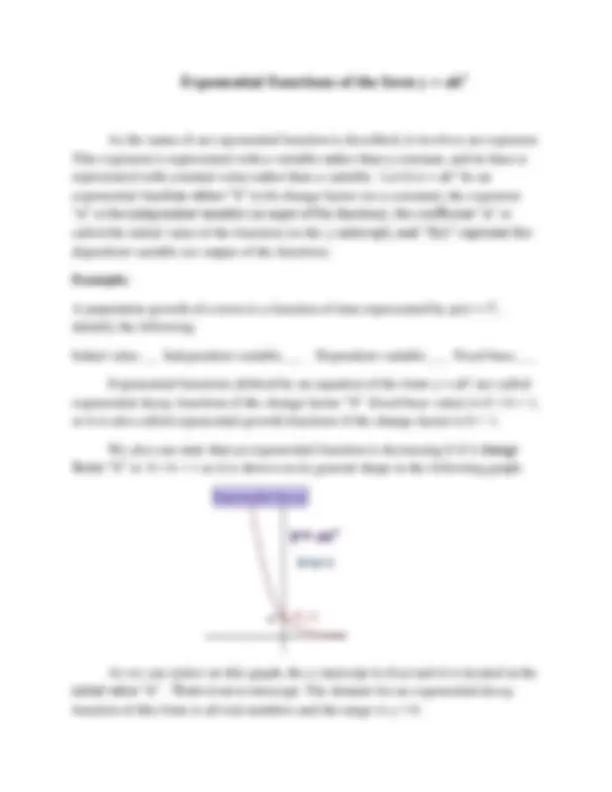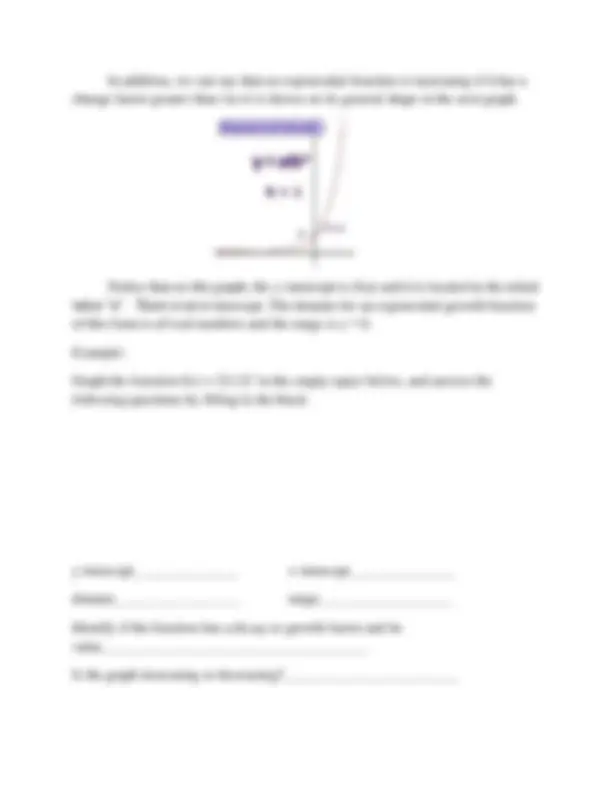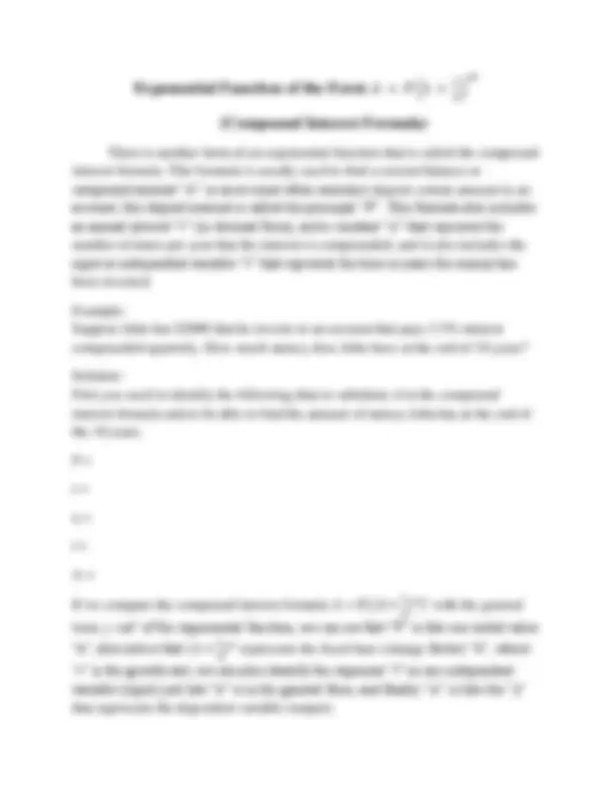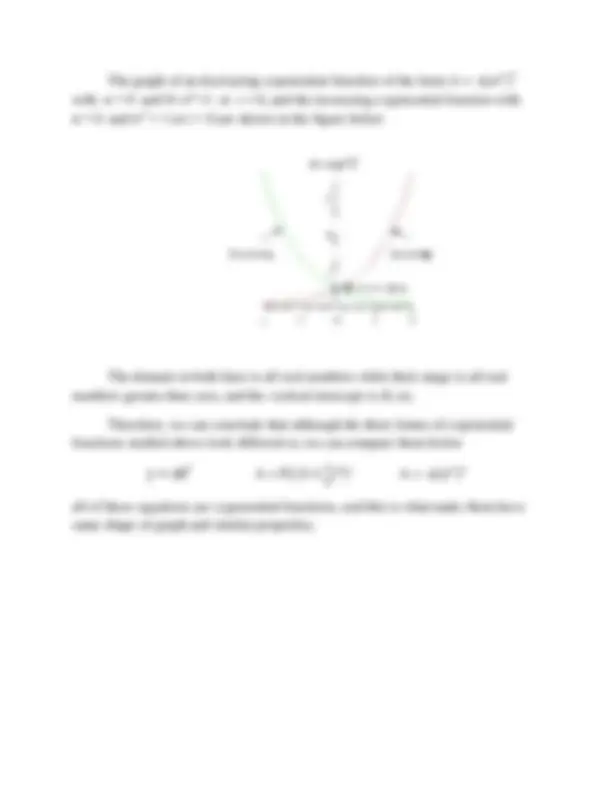






Study with the several resources on Docsity

Earn points by helping other students or get them with a premium plan


Prepare for your exams
Study with the several resources on Docsity

Earn points to download
Earn points by helping other students or get them with a premium plan
Community
Ask the community for help and clear up your study doubts
Discover the best universities in your country according to Docsity users
Free resources
Download our free guides on studying techniques, anxiety management strategies, and thesis advice from Docsity tutors
An overview of exponential functions, focusing on their properties and graphs. Topics include the form of exponential functions, increasing and decreasing functions, and the compound interest formula. Examples and graphs are included.
What you will learn
Typology: Lecture notes
1 / 8

This page cannot be seen from the preview
Don't miss anything!





Overview
In addition, we can say that an exponential function is increasing if it has a change factor greater than 1as it is shown on its general shape in the next graph
Notice that on this graph, the y-intercept is (0,a) and it is located at the initial value “a”. There is no x-intercept. The domain for an exponential growth function of this form is all real numbers and the range is y > 0.
Example:
Graph the function f(x) = 2(1.5)x^ in the empty space below, and answer the following questions by filling in the black
y-intercept_______________ x-intercept_______________
domain__________________ range___________________
Identify if the function has a decay or growth factor and its value______________________________________
Is the graph increasing or decreasing?_________________________
There is another form of an exponential function that is called the compound interest formula. This formula is usually used to find a current balance or compound amount “A” in an account when someone deposit certain amount in an account; this deposit amount is called the principal “P”. This formula also includes an annual interest “r” (in decimal form), and a constant “n” that represent the number of times per year that the interest is compounded, and it also includes the input or independent variable “t” that represent the time in years the money has been invested.
Example: Suppose John has $2000 that he invests in an account that pays 2.5% interest compounded quarterly. How much money does John have at the end of 10 years?
Solution: First you need to identify the following data to substitute it in the compound interest formula and to be able to find the amount of money John has at the end of the 10 years.
P =
r =
n =
t =
A =
If we compare the compound interest formula A = P t^ with the general
form y =abx^ of the exponential function, we can see that “P” is like our initial value
“a”; also notice that represents the fixed base (change factor) “b”, where
“r” is the growth rate; we can also identify the exponent “t” as our independent variable (input) just like “x” is in the general form, and finally “A” is like the “y” that represents the dependent variable (output).
Notice that the formula A= t , which is used when a quantity decreases or increases at a constant rate just, is just another form of the general equation of the exponential function y = ab x , where a = represent the initial amount, the “r” represents the constant rate, the independent variable x = t represents the time in years, b = represents the fixed base, “e” is the constant irrational number approximately equal to 2.718, and the dependent variable y = A is the output amount of the investment.
Example:
If you invest $1,000 at an annual interest rate of 5% compounded continuously, calculate the final amount you will have in the account after five years.
Solution:
We need to find the following data to be able to find the final amount in the account.
=
r =
t =
A =
Since the continuous compounding formula is just another form of exponential function, its graph also has similar shape as the general form of the exponential function and its properties are also similar.
The graph of an decreasing exponential function of the form A = t with > 0 and 0< <1 or r < 0, and the increasing exponential function with
0 and > 1 or r > 0 are shown in the figure below
The domain in both lines is all real numbers while their range is all real numbers greater than zero, and the vertical intercept is (0, ).
Therefore, we can conclude that although the three forms of exponential functions studied above look different as we can compare them below
all of these equations are exponential functions, and this is what make them have same shape of graph and similar properties.
A = 𝑎(𝑒𝑟)t
Decreasing Increasing
(0, 𝑎)